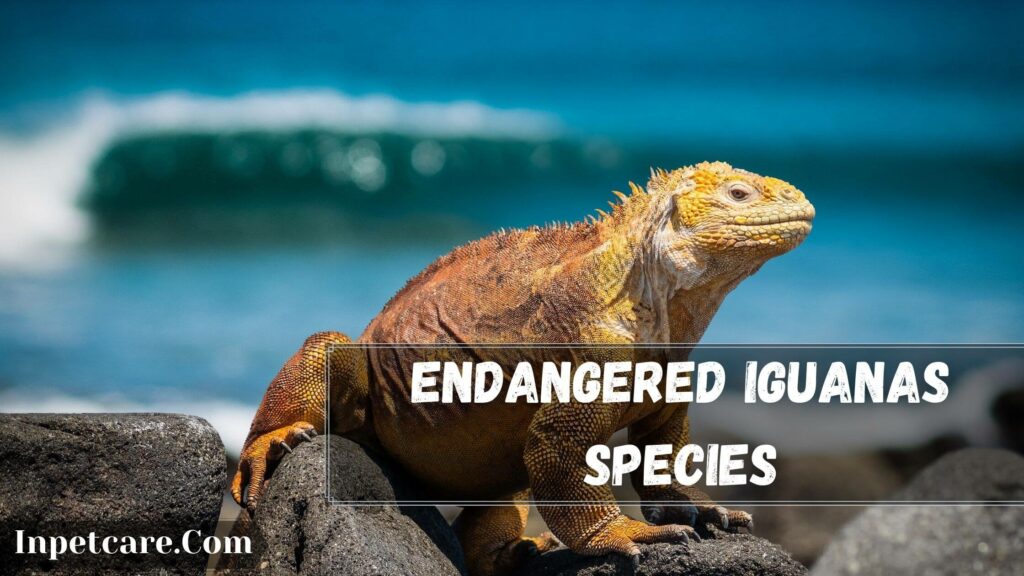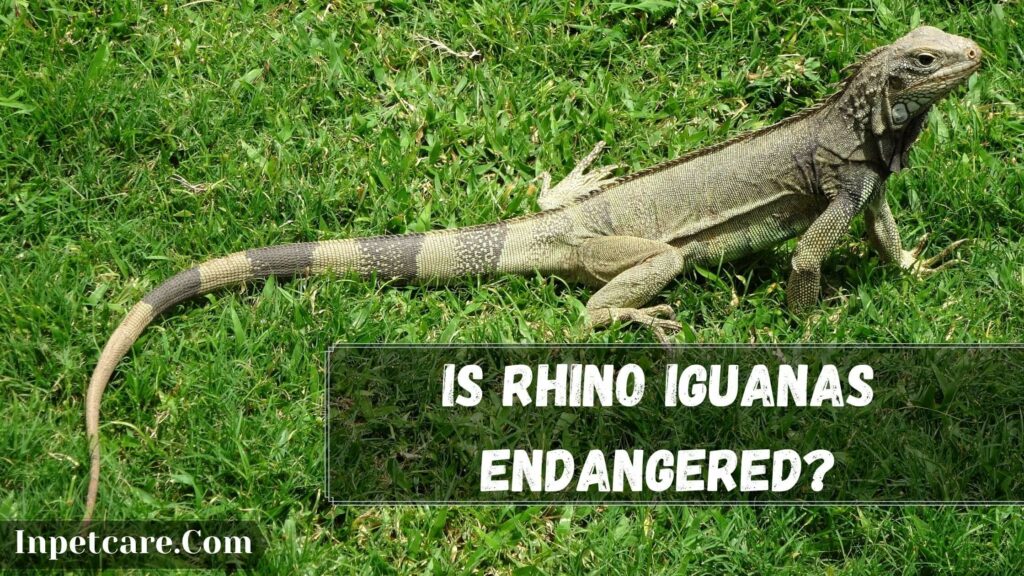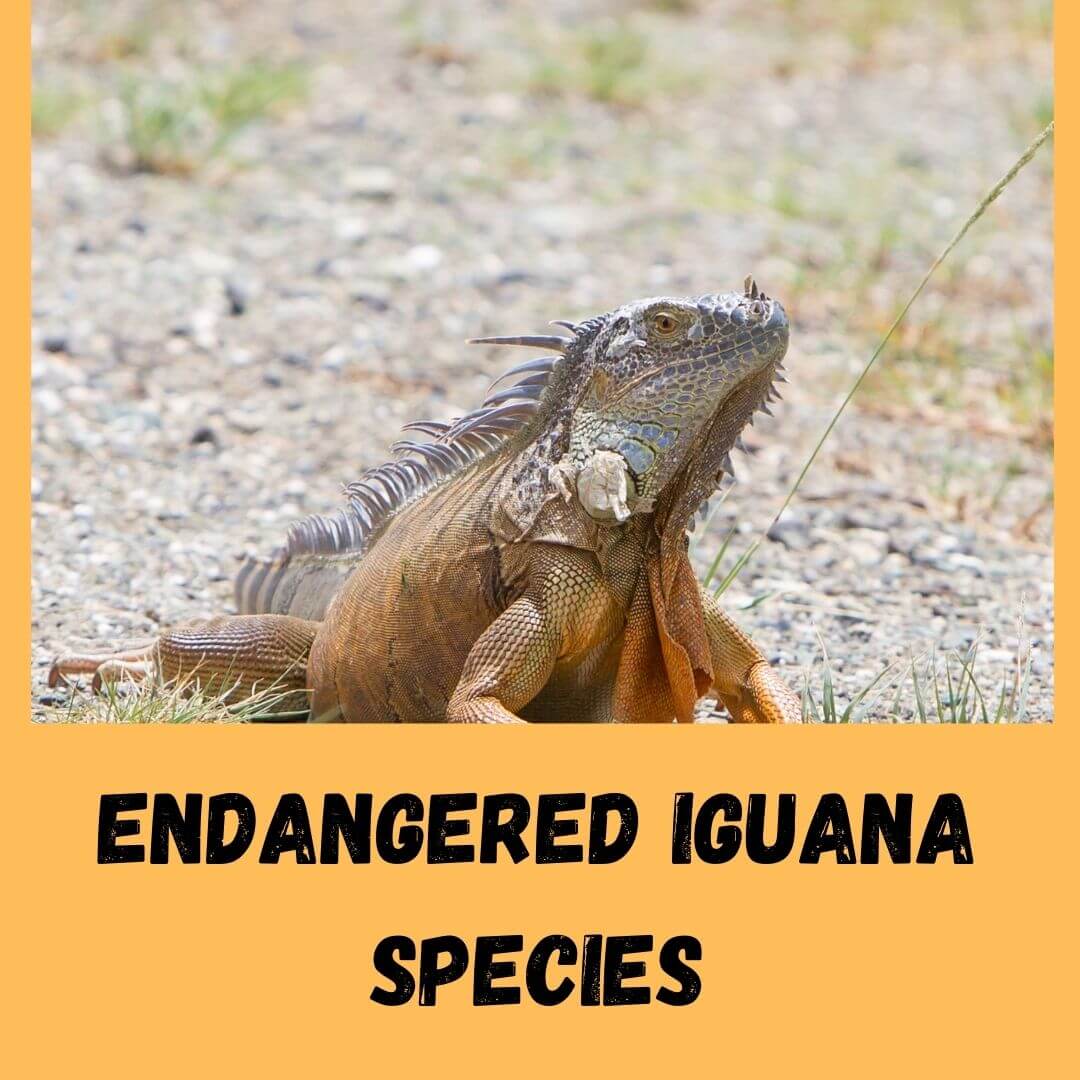We all know that iguanas are among the world’s most endangered reptiles facing a severe decline in their population. There are many species of endangered iguanas, except for some like the green Iguana. Therefore, in this article, we will look at endangered Iguana species and learn about them.
Post Contents
Endangered Iguanas Species

Are Green Iguanas Endangered?
No. Green Iguanas are not endangered species as they are widely distributed globally. The green Iguana range extent from Central America to the eastern Caribbean islands. They are also found in the tropical parts of South America.
As Green Iguanas are not endangered species, they are commonly traded as pets. Plus, Green Iguanas have also considered a pest in the United States as they are invasive species. Green iguanas usually prefer spending most of their time living in the canopies. They only come down/out to mate, lay eggs, or change trees. When we talk about keeping them in captivity, their tank should have a temperature of around 70-90° F.
In captivity; Green Iguanas also need a basking area to regulate their body temperature. Green Iguana is vulnerable to being lethargic in the absence of proper heating and lighting. Do you know that they can grow up to 6 feet long and around 20 Pounds in captivity? Therefore, it is essential to house them in a at least 55 gallons tank.
That tank should always have the right equipment and obstacles installed. The decoration and the hidings will help you keep your green Iguana happy. As they love eating leaves, you should also look at placing some plants inside the tank that is not harmful to iguanas if consumed.
Are Desert Iguanas Endangered?
No. Desert iguanas are not endangered but are the least concerned species. They hail from the Mojave desert region, which lies in the area of East-Central California, Western Arizona, and Southern Nevada.
Desert Iguanas are also inhibiting the Sonoran desert area, Arizona, Mexico, California, and Baja California. They prefer living in a contained space within the range of creosote bush, just dry sand desert scrubland. Thus, Desert iguanas even prefer Rocky stream beds.
They are very alertive by nature and tend to defend their territory. Desert Iguanas are very alert to their surroundings and quickly retreat to their burrows when startled in the daytime.
When they come across any Predator, they inflate their bodies to look double their actual size to scare them off. They grow their body to give a defensive display when they can’t outrun the Predator. They are medium-sized Iguana with a long tail that can reach up to 40 cm.
With a blunt head, they have pale grey or whitish color with a brown reticulated pattern drawn on the back and sides. Desert Iguanas are solitary animals who love being alone and are primarily active during hot midday hours.
If they feel threatened, they take no time scampering into a shrub and quickly go down the hole. As they’re primarily herbivorous, they forage on leaves, seeds, and fruits. They also eat insects when there is food scarcity. The water they need is usually fulfilled by the food they eat.
Are Marine Iguanas Endangered?
Yes. Marine iguanas are endangered species. And, right now, they are listed as vulnerable by IUCN red list. The population and sub-population of marine iguanas are either recorded as vulnerable or endangered. As of now, there are approximately 250000 Marine Iguanas left worldwide.
They are endemic to the Galapagos Islands and threatened by climatic disasters. Do you know that Marine iguanas are the only lizard that spends time in the ocean. Talking about their origin, they are only found on Galapagos Islands, just like many other species living on that Island.
Do you know that the population across the archipelago has been so isolated for so long that each Island now has its subspecies? These islands have steep rock cliffs, low rock ledges, and intertidal flats. Therefore, Marine iguanas are only left to access food by diving into the ocean.
They usually look to lay their eggs in a Sandy area. Talking about its size, Marine Iguana size entirely depends upon its subspecies and diet. However, male Iguana will be more significant and have longer spines than females.
You can expect the average size of a Marine Iguana to be around 2-5 feet, with a bodyweight of approximately 15-26 pounds.
Their tail comes with a 50-84 CM size, which is long compared to its other species. They are the only Marine lizard that dives into the ocean to feed on aquatic algae. Surprisingly, Marine Iguanas can hold their pet for a very long time and spend up to 40 minutes underwater.
Are Blue Iguanas Endangered?
Yes. Blue iguanas are highly endangered because only 1000 are left in the wild. Most of these blue iguanas are in the Salina reserve under the observation of the blue Iguana recovery program.
Do you know that the Blue Iguana is one of the most endangered reptiles globally, indigenous only to the Grand Cayman Islands? Due to continuous predation and Habitat loss, the remnant wild population of blue Iguana paid to survive by its declining population within its original range.
Unfortunately, the IUCN Red List state and lists Blue Iguanas as endangered species. They love inhibiting natural xerophytic shrubland and prefer open, Rocky & sunlit areas of dry forest. They are primary herbivorous but can also eat insects without food scarcity.
They usually forage on plant matter, leaves, stems, flowers, and fruits. Occasionally they also feed on soil, excrements, and fungi. From tail to nose, they can grow up to 5 feet and weigh 30 pounds. Blue Iguanas are most active during the date time and relax at night on trees.
Apart from tree cavities, rock holes also serve as a sleeping area for blue Iguana. Unlike its other species, the blue Iguana mostly loves staying on the ground as they are terrestrial.
Interesting Further Reading
- How Long Can An Iguana Live Without Heat?
- Can Iguanas Eat Mushrooms? 5 Risks involved
- What Do Green Iguana Eat? (21+ Safe Foods)
Are Rhino Iguanas Endangered?

Yes. Rhino Iguanas are endangered species of Iguana that hails from the Caribbean Island to its surrounding Island. There are only 10,000-16000 Rhino Iguanas remaining in the wild. The rhinoceros Iguana is a species that belongs to the genus Cyclura.
Their skin color range from a steer grey to dark green. Rhino Iguanas can also be brown sometimes. They come in the size of 60-136 CM. As another member of its genus cyclura, Rhino Iguanas are also heavy-headed and giant body lizards with flattened tails and strong legs.
They can be around 10-20 Pounds. They rely on the external source of heat to warm themselves. Rhino Iguanas are known to move as the sunrise to achieve the optimal internal temperature. They are very vulnerable and often look to flee quickly when threatened or attacked.
If rhinoceros iguanas are cornered, they will also attack fiercely and aggressively by biting and repeatedly striking with their thick tail. They’re primarily herbivorous. Rhino Iguanas forage on flowers, berries, fruits, and leaves.
Males of this species are highly territorial, and the most aggressive ones usually capture the most extensive range of territory. Such a decline in the population was due to the actions of humans. As there is a massive demand for old-growth trees, the environment and Habitat loss severely impact their people. The illegal international pet trade is also responsible for such a dramatic change in their population.
What does IUCN Have To Say?
To save the Iguana species population worldwide and protect them from the illegal international pet trade, the IUCN has partnered with many government agencies, research institutions, and conservation organizations to take and implement immediate but effective conservation measures.
Therefore, the IUCN prepared a specialized group known as the SSC Iguana specialist group or ISG. The ISG’s mission is to facilitate and privatize conservation awareness programs and science to ensure wild iguanas’ survival and habitats.
To achieve this, ISG is responsible for implementing, advising, and fundraising for programs such as invasive species control, field research, population surveys, and protected areas management. It’s their responsibility to ensure the hatchling of iguanas are in a confined environment and saved until they grow up to a less vulnerable size.

94% of pet owners say their animal pal makes them smile more than once a day. In 2007, I realized that I was made for saving Animals. My father is a Vet, and I think every pet deserves one. I started this blog, “InPetCare”, in 2019 with my father to enlighten a wider audience.
